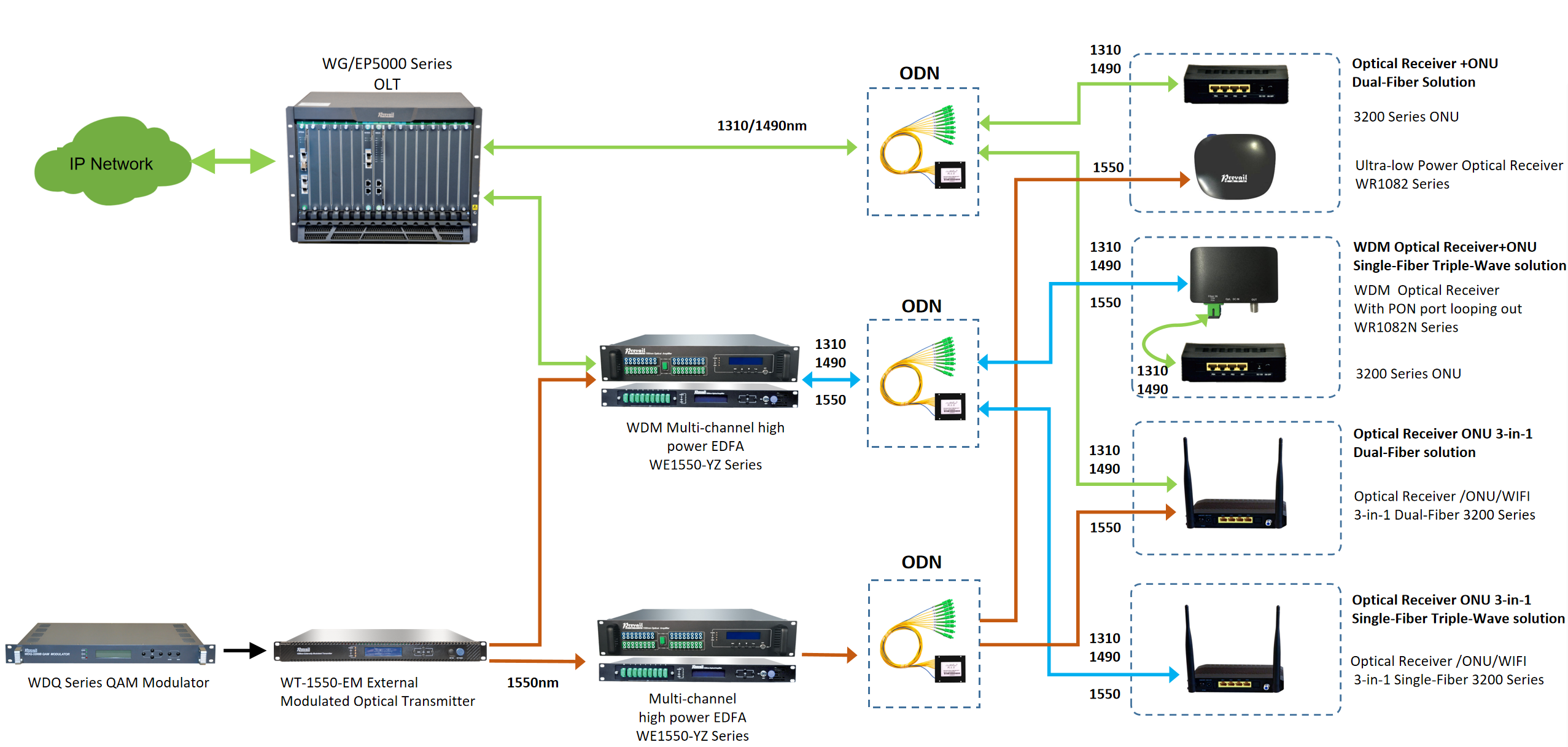
The main business of radio and television operators includes broadcast and television services, as well as two-way data services. Therefore, the FTTH construction of radio and television must involve the FTTH construction of the broadcast and television services and the FTTH construction of the data two-way business.
Combined with the current resources of the radio and television, there are two main solutions to realize FTTH: single-fiber triple-wave solution and dual-fiber triple-wave solution.
1. Single-fiber triple-wave solution
In the single-fiber triple-wave solution, the downstream 1550nm optical signal and the PON 1310nm/1490nm optical signal of the broadcast and television service are combined into a fiber physical channel by the WDM wavelength division multiplexing device in the front-end machine, finally reach to users by transmission and splitting of ODN device.In the user's home, using our single-fiber triple-wave, data +CATV optical receiver 2-in-1 ONU, it can directly output broadcast TV signals and broadband data signals. An optical receiver with a WDM PON signal loop-out can also be used to connect the looped-out PIN signal to an existing ONU, thereby realizing the separation and output of broadcast TV services and broadband data services.
The advantages of the single-fiber triple-wave access solution are as follows:
* End-to-end management: Because single-fiber triple-wave network structure is end-to-end, user terminal equipment can be easily managed. Network administrators can implement operations such as remote service activation, fault maintenance, and service shutdown.
* Low ODN cost: Because broadcast TV signals and broadband data signals are transmitted on the same physical fiber, this solution greatly reduces the construction cost of the ODN network splitter and core resources from the front end to the user's home .
2 Dual-fiber triple-wave solution
Broadcast TV service downstream 1550nm optical signal and PON 1310nm/1490nm optical signal are transmitted in different cores, and each reaches the user's home through different physical transmission channels. After entering the home, the CATV optical signal input FTTH optical receiver to receive and provide RF electrical signals, and the PON optical signal input FTTH ONU to provide broadband data services.
The advantages of the dual-fiber triple-wave access solution are as follows:
* No wavelength interference: The transmission channels of broadcast optical signals and data bidirectional optical signals are physically independent fiber channels, which avoids the problem of wavelength interference.
* Low user terminal cost: Compared with the single-fiber triple-wave solution, the dual-fiber triple-wave can save a lot of user terminal DWDM equipment costs.
* High reliability:Completely eliminating outdoor active equipment , high reliability , which can save a lot of costs of operation and maintenance and outdoor equipment power supply.